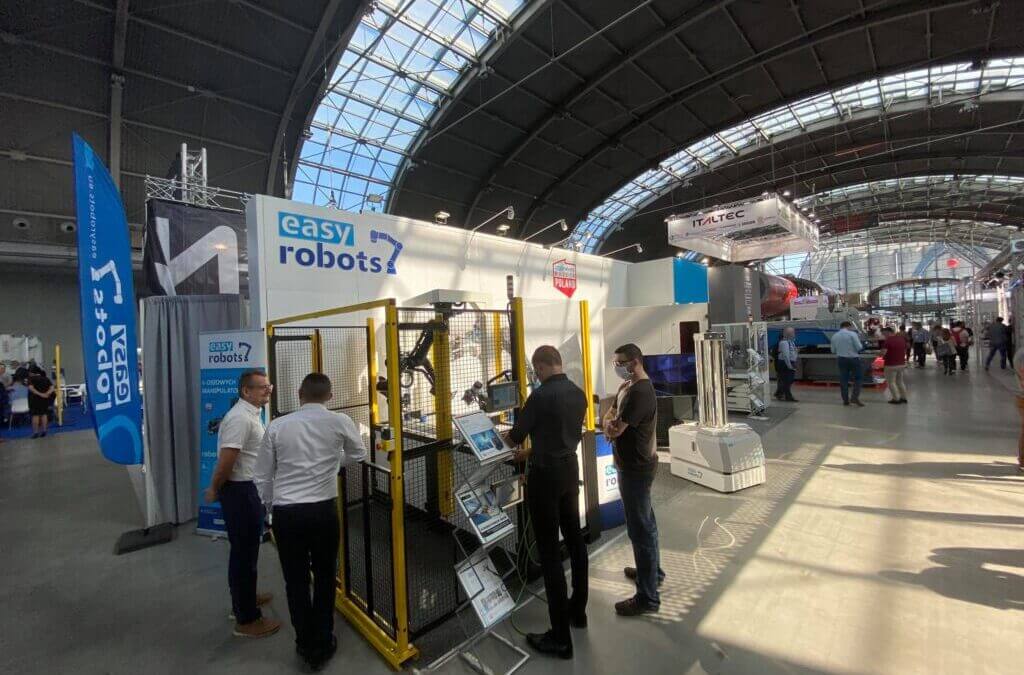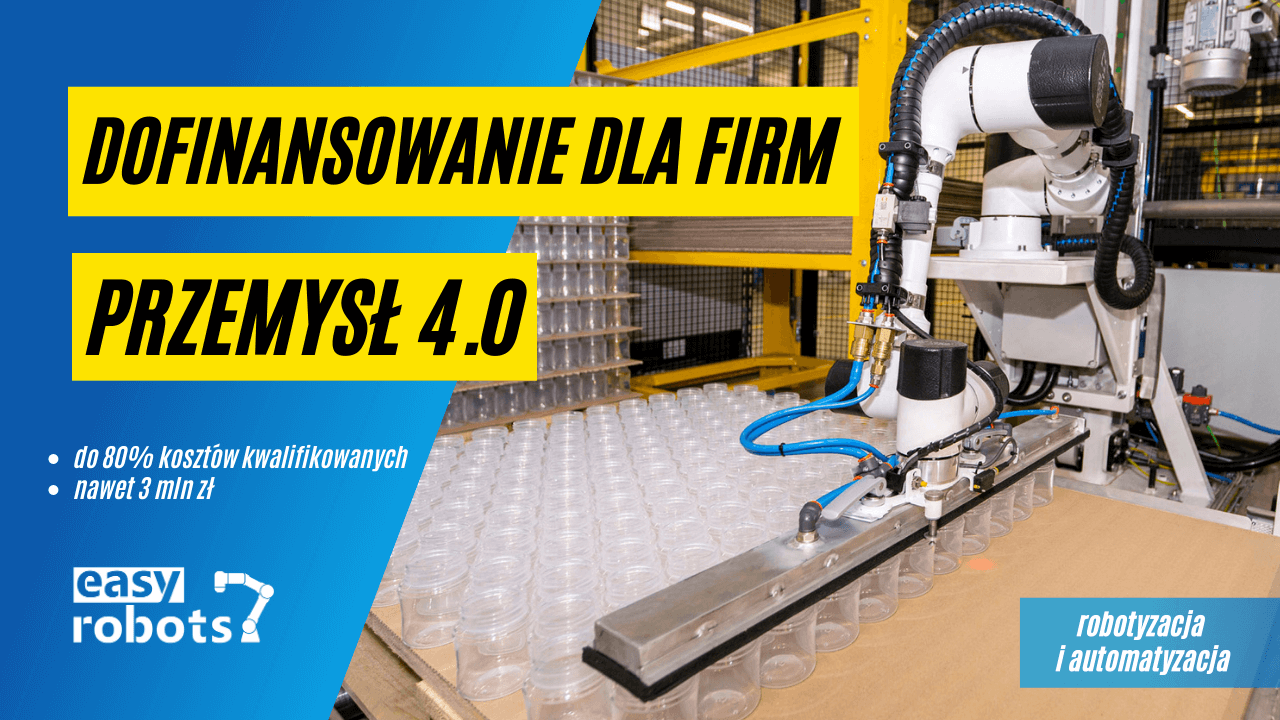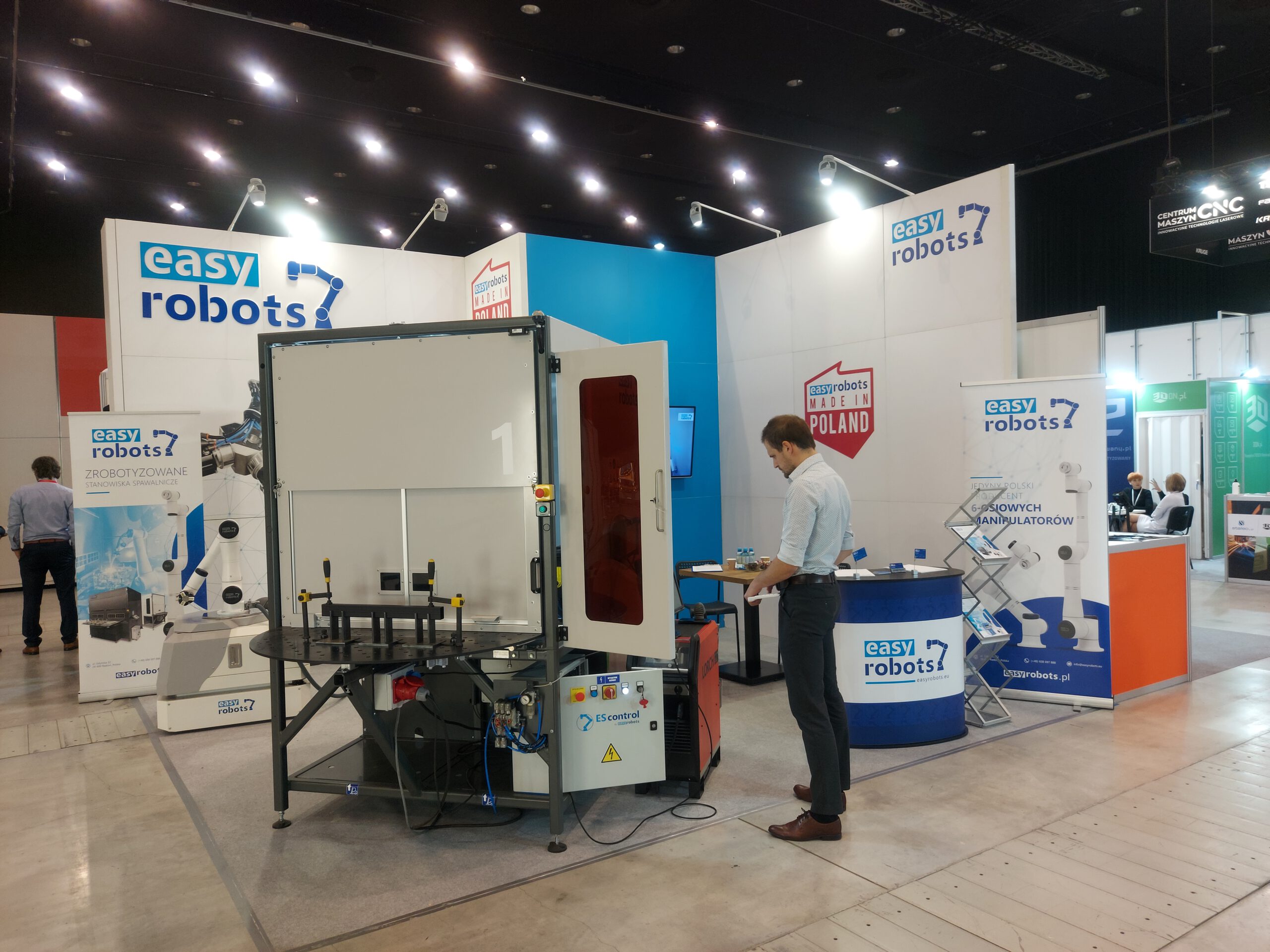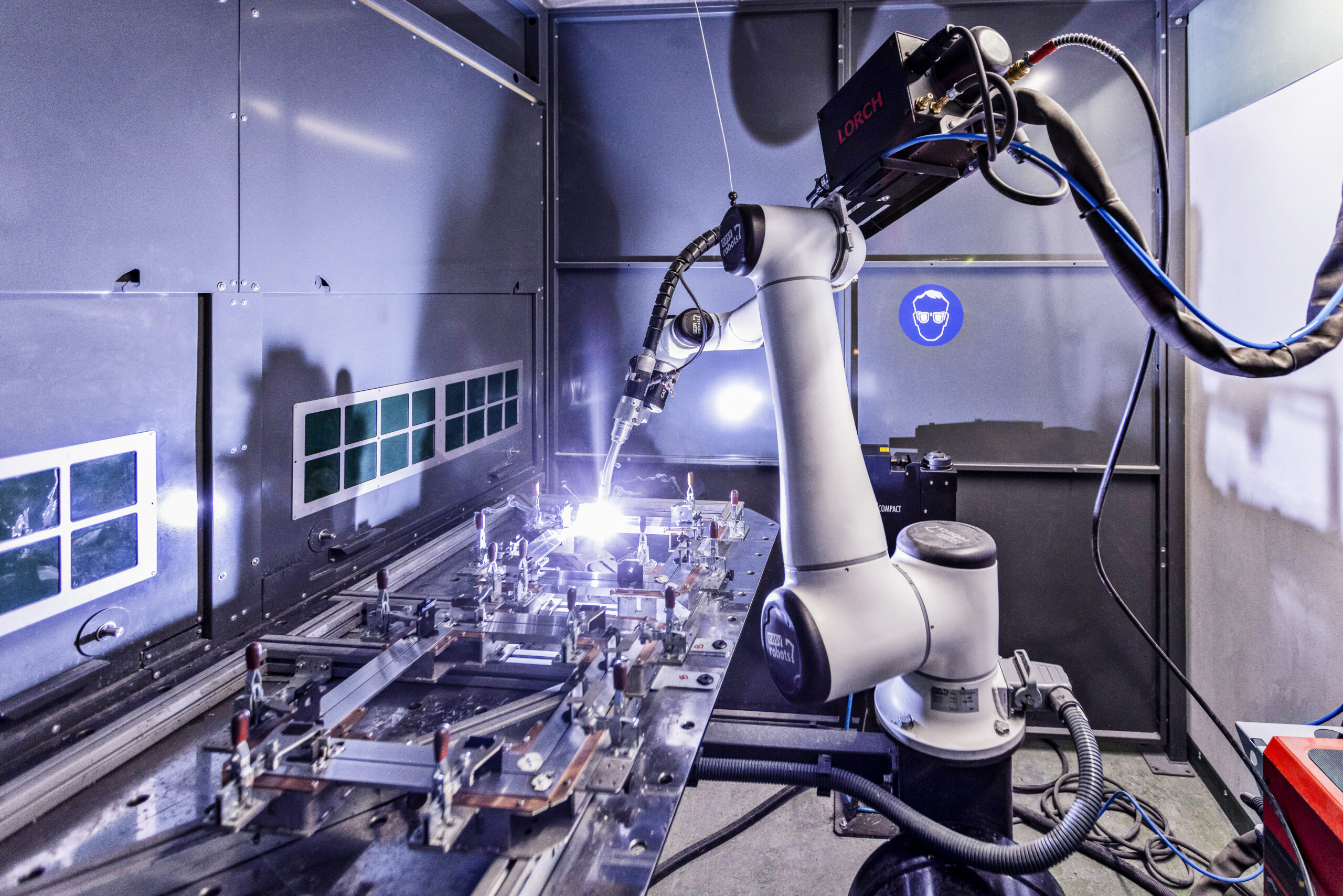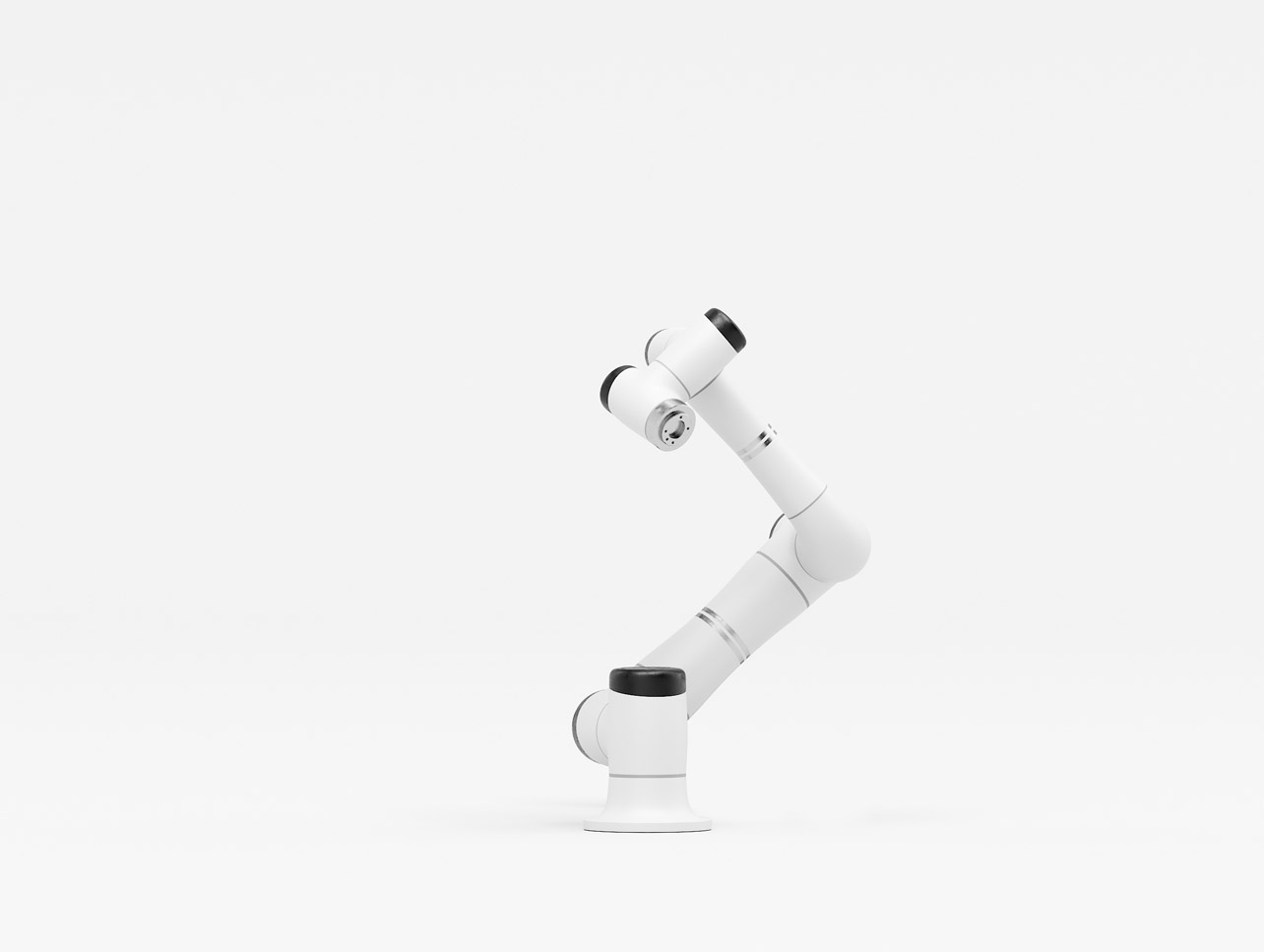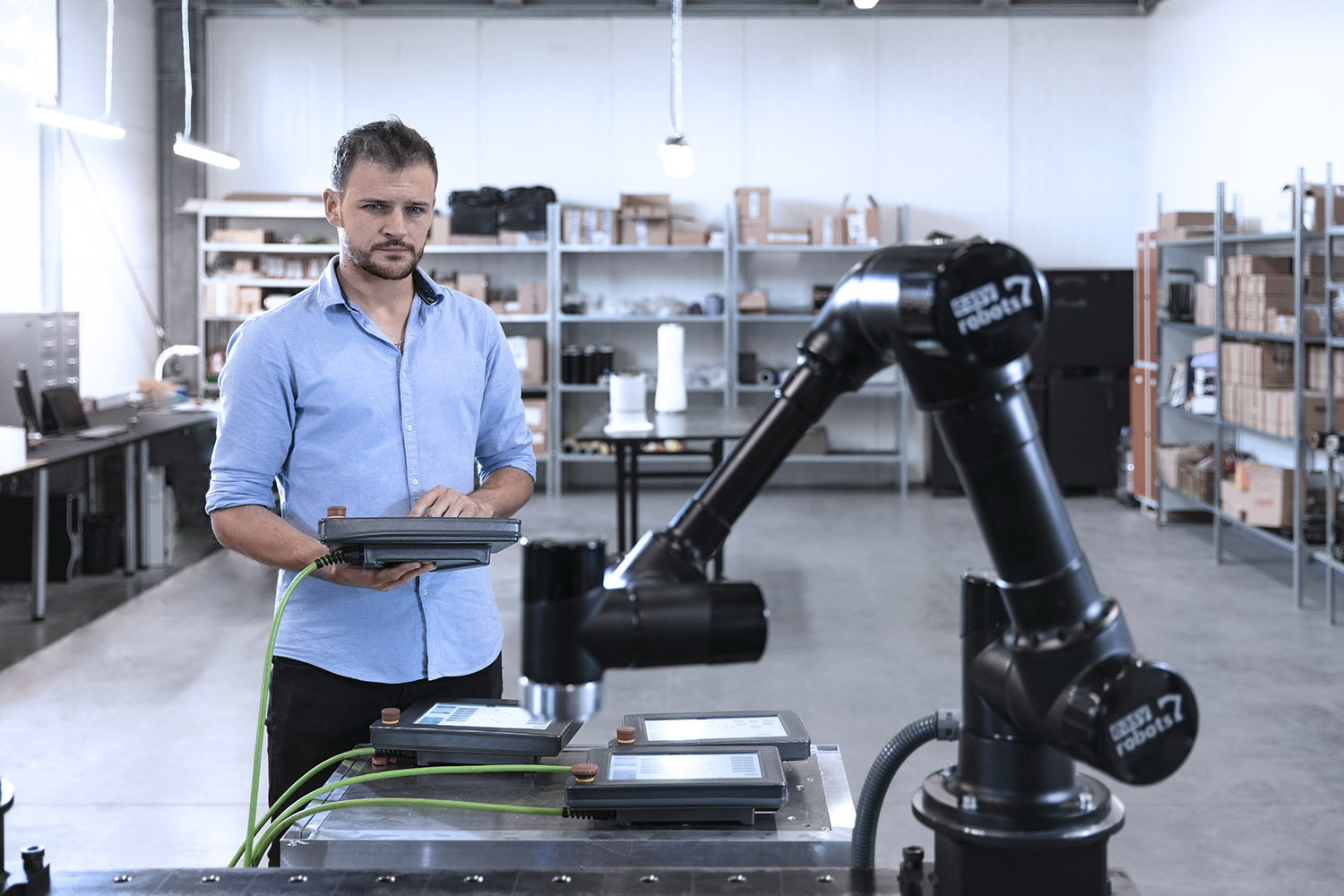Hopes and fears - how to find your way in the era of robotics?
JUNE 17, 2019
Where is the limit for this type of machine? What will our reality look like with further progress in robotization? What benefits and what problems can it bring? Where is there a place for humans in a job dominated by robots? What will be the impact of the development of artificial intelligence on the autonomy of robots and human-robot relations? And finally, what is a robot and what (or who) will he become?
What is a robot and what is it used for?
A robot is a mechanical and electronic device whose task is to replace or support a human in performing a specific activity. Its domain is automatic work or behavior resulting from prior programming for a given activity. Robots fall into a number of very different categories, ranging from of industrial robots, through medical, mobile and even kitchen robots to humanoid robots (resembling humans in appearance and behavior). A car is a robot, it can even be autonomous, i.e. endowed with "intelligence", the ability to make decisions. Each type has its own tasks and method of operation developed by the creator.
Robot conquers the world
The idea of mechanical devices performing specific tasks automatically has its origins in ancient civilizations, but the word robot (in this case denoting a fictitious humanoid robot) first appeared in 1920 in the work of the Czech writer Karol Capek entitled PIPE[1]. Simple mechanical machines made human work easier until the computer revolution, which also promoted the development of electronics and programmable industrial machines. Industrial manipulators, most often in the form of a mechanical arm with 6 rotation axes, began to appear in workplaces, performing work that was too hard for humans, dangerous, repetitive, requiring high speed, or simply tedious. A separate direction is the dynamically developing branch of collaborative robots, which enable safe work with humans side by side at one workstation.[2].
Employers must take into account that the migration of production workers is high, and a newly hired fitter may resign from work before the trial period ends.
The development of robotics is gaining momentum, especially nowadays, when in industrially developed countries there is a serious problem with filling jobs with people. An increasingly common problem is tasks that require a person to mindlessly repeat an action hundreds of times a day. There are a huge number of such workplaces in industry, especially in large series of manufactured products. This type of work brings less and less satisfaction and often low earnings. It requires a lot of patience and meticulousness. And these features are increasingly missing in people of the younger generation. Nowadays, quick success and interesting, light and well-paid work are expected. Employers must take into account that the migration of production workers is high, and a newly hired operator or assembler may resign from work before the trial period ends. Moreover, robots are becoming faster, more precise and safer. The efficiency of robotic stations increases. The robot does not require breaks from work, does not take holidays or sick leave. Financial amortization of robotic stations may be completed faster than a year. All these factors make large-scale robotization of industry an inevitable phenomenon.
Mobile, social and humanoid robots
Mobile robots replace humans in exploring the Earth and space. Specially constructed machines can reach places inaccessible to humans and help search for earthquake victims in the rubble. Mars rovers take the first "steps" on an alien planet long before humans. The first man to set foot on the surface of the red planet will have blazed a trail, and the alien planet will already be largely known. Futuristic visions are becoming real in which robots will build a Martian base, and humans will appear there only when living conditions become more similar to life on Earth. Will we still feel like conquerors then?
Social robots are also gaining popularity. They are designed with older and dependent people in mind. The robot is supposed to assist a person, monitor his health, transport objects, or lead a person to a designated goal. A set of sensors helps detect a possible fall or fainting. If a human does not respond correctly to the activities performed by the robot, it can then raise an alarm notifying about the problem. Such robots can be used in elderly care homes or hospitals.
The branch of humanoid robots is also developing intensively. Machines imitating humans increasingly resemble humans in structure and movement. Progress in this field can be seen by observing the activities of American engineers from BostonDynamics and their flagship product, Atlas robot[3]. This direction is strongly supported by the military industry. The futuristic vision of the perfect robotic soldier is getting closer to its terrifying realization.
Where will there be a place for humans in a world dominated by robots? What tasks will people face when robots take over workplaces?
Fears about the world of robots
Discussions about robotization often raise the issue of robots taking over jobs. People present the fear that robots will put some of us out of work. The number of positions to be filled in industry may be reduced dramatically, although this may not necessarily be the case. Properly carried out robotization allows companies to increase production and invest in development.
Progress, even despite the reduction of people in production, forces the employment of more people in the company's decision-making department. This requires people to specialize in other fields and, in a broader perspective, change trends in education. Robots still do not have the ability to plan and their programming requires a specific range of skills. The way of programming itself is constantly changing. Tools and techniques are emerging to facilitate this process to such an extent that an operator operating, for example, a CNC machine tool or another type of production machine, can now be responsible for programming and operating robots at several stations.
Currently, every company where production has been robotized employs one or several roboticists responsible for reprogramming and maintenance.
Robots are taking over space in many areas. Everywhere there is a need for a person responsible for planning their activities. Mobile robots, for example, are conquering the process of parcel distribution in the warehouses of large logistics companies. The movement of such robot teams must be properly predicted and planned. In such activities, man is still irreplaceable.
Of course, artificial intelligence algorithms are gaining a place here, but they also need to be supervised parameterized by a human. Machine learning methods are one of the most dynamically developing fields of artificial intelligence. To use them effectively in robot control, you need to develop a database of robot behavior or simply teach it by presenting the work done or manual control. This will differ from the currently popular robot programming, which is similar to lower-level programming languages that require specialized knowledge.
The inevitable need to improve the process of launching robots at work stations will force the creation of positions such as robot trainers or machine learning algorithm trainers.
While work in production often requires an employee to have higher technical education, work in sorting, palletizing or assembly does not necessarily. If robots dominate these fields, and this is already happening slowly, many people will not be able to change industries and will become unemployed overnight. Professions such as robot trainer or machine learning algorithm trainer will probably not fill these gaps. On a small scale, the problem is not visible, but over time it can become global. How will societies deal with this? There are ideas of taxing the work of robots. This would allow for the creation of a fund enabling social assistance for people forced out of workplaces by machines.
The limits of artificial intelligence
A separate topic that should be considered when considering the world of robots is the issue of artificial intelligence, machine autonomy, and the limits to which the development of these fields will still be safe for people.
With the emergence of the idea of a cybernetic human, many codes of ethics for robots were created. They all contained a core of rules that robots could not cross. These are primarily rules prohibiting robots from harming humans. The writer Isaac Asimov is considered the pioneer of such laws for robots, and the principles he formulated in 1942 are:[4]:
- A robot cannot harm a human being or, through inaction, allow a human being to suffer harm.
- A robot must obey human orders unless they conflict with the First Law.
- A robot must protect itself unless it conflicts with the First or Second Law.
Designing machines in accordance with these laws is intended to ensure human safety. It is assumed that regardless of the level of sophistication of the robot, the core rules in the form of this code should be implemented in some way.
Is the computer a brilliant strategist in war?
Currently, artificial intelligence algorithms still come down to the implementation of tasks set quite narrowly by humans. A computer programmed to play chess or Him, although his skills surpass the world champions in these games by many levels, he is unable to go beyond the gameplay template and use his "intelligence" in another field. This means that such a computer will not be a brilliant strategist in a real war waged by humans. Currently, humans are unable to develop a computer that will get out of control and pose a threat to humans. This would require the creation of an artificial mind that could develop and educate itself in the direction it chooses. In the visions of the outstanding science-fiction writer and futurologist Stanisław Lem, the development of such a creation is quite real and would lead to completely new dimensions of artificial intelligence.[5]. For now, however, this is quite a distant vision. For example, machine learning methods allow for process optimization by analyzing available data. However, the scope of action is strictly defined here. However, it is possible that in times Internet of Things (Internet of Things) or Big Data, where computers are permanently connected to vast resources of knowledge and data, technological evolution will not break this barrier.
Robot autonomy and our safety
Moreover, developing a robot for the arms industry, ready to replace humans on the battlefield, will not require advanced artificial intelligence algorithms that go beyond the knowledge known to us today. All it takes is developing a structure capable of imitating a human in its physical capabilities - this is definitely within the capabilities of this generation of engineers - and designing its control system in a way that requires it to disregard the first rule of the robot code - that is, not harming humans. Giving it autonomy is possible in a similar way to autonomous cars, which are entering the market more and more dynamically. Such cars are finally forced to make decisions about driving. Vision systems allow them to see and analyze the surroundings, and the control system is responsible for deciding on speed, interaction with other drivers, and reacting to hazardous situations. These systems must be developed to such an extent that they can make decisions on ethically controversial issues. Hypothetical problems are discussed where the machine may be faced with a decision. The robot must balance the value of life. Should you sacrifice one life to save another? Will the control system for a robot soldier be much different? Only the goal will be different, but the methods will be similar and definitely achievable from a scientific point of view.
So is there really anything to be afraid of and can artificial intelligence bring destruction to humanity?
At this moment, the robot does not have its own will that will push it to turn against humans. But what if the will of a human - the designer - pushes the robot against other people? Then nothing will stop the machine from doing so.
Robot – thing or person?
A separate issue that we will have to face in the era of robotization is the question of how to treat robots and whether they deserve a place in society. The answer to this seemingly trivial question - after all, they are only machines, human creations designed to obtain specific benefits - turns out to be quite complex when looked at more broadly.
The first issue is responsibility for the machine. In simple, programmable devices, the matter is quite obvious - the designer is responsible for any undesirable situations resulting from inappropriate behavior. Machine-fault accidents are always the result of an error at the design or integration stage of devices. So the responsibility is obvious. But what happens when we give the machine more and more autonomy? When the robot solves problems and learns on its own, who will we blame when it makes a decision that is wrong from our point of view? It is impossible to prepare it for every possible scenario (and there would be no talk of artificial intelligence here). The designer cannot predict all eventualities during work or the operation of a robot introduced into our world.
The implemented set of laws and rules that the machine is to follow may turn out to be ambiguous in a specific situation. Then the effect of the robot's action and the guilt or lack thereof should be judged as in the case of our human actions. But who would be judged? Robot or its creator? Does allowing artificial intelligence to have a say and leaving the decisions to the machine frees the designer, at least partially, from responsibility for its achievements?
These are questions that will certainly be faced when robots come into permanent use. A number of works are being written on this subject. One position is that a robot should be treated legally in a manner analogous to animals (Robot as Animals).[6].
However, the robot is still called a machine and equated with it in considerations. Treated subordinately and submissively. Is a robot just a thing, a brainless tool that is not entitled to any rights or even basic respect? And if so, is there a limit in the future evolution of these types of machines beyond which they will become something more? To answer this question, we must first consider what we mean by the term "person".
Robot – a self-aware being?
According to contemporary philosopher Peter Singer, a person is a self-aware being. So what is self-awareness? It is said to be the ability to feel various types of external stimuli. After all, animals have such abilities, robots would not be worse in this respect. Stanisław Lem argues that what we call consciousness is an evolutionary product, nothing that distinguishes us from other species, nothing metaphysical. He even claims that evolution has only moved us away from perfection, which is closer to amoebas or plants than to humans. To survive, humans need the cooperation of billions of cells and many organs. It converts energy several times through the food chain. Where can we find the genius of photosynthesis and the simplicity of survival of plants and bacteria?! What we have as our evolutionary size is what Lem calls imperfection.
Why, in such a system, do we feel special enough to call ourselves persons, while at the same time denying this privilege to representatives of other species?
The difference in favor of people is clearly indicated by Karol Wojtyła in his work "Person and Action."[7]. In his reflections, the Bishop of Krakow claims that "Man is a person, and we are convinced of this because he performs actions. (…). The experience and, at the same time, the intellectual view of a person in and through actions comes in a special way from the fact that these actions have morality, that they are morally good or bad. (…). Only an action that involves a person as an activist - we have found that only such an action deserves the name "action" - is characterized by morality. The future pope further writes: "The source from which we gain knowledge about what reality a PERSON is will be action - an even more special source - MORALITY in the dynamic, i.e. existential, aspect."
Taking into account the above considerations, we can conclude that as long as the morality of the action undertaken by the robot is an implication of restrictions and rules imposed on it by humans, the robot cannot become a person and should not be treated as such.
We can also look for an argument in this discussion in the works of Robert Speamann, who in his work "Persons. About the difference between something and someone.”[8] he writes that the dignity of a person is often taken away from people due to the lack of certain features, but we can also transfer his beliefs to the robot-human field. Speamann argues that the name of person is due to belonging to a species, and not to possessing a specific set of characteristics, because people as Persons are individuals in a unique way for each person. He takes life as the criterion for the species and repeats, following Aristotle, that to exist is the same as to live, and Persons are living beings.
Author: Łukasz Gruszka
BIBLIOGRAPHY
- Kurfess, Thomas R. – Robotics and Automation Handbook, Taylor & Francis, 2016.
- https://zrobotyzowany.pl/informacje/publikacje/3215/roboty-wspolpracujace-przeglad-rynku-cobotow
- https://www.bostondynamics.com/atlas
- https://automatykaonline.pl/Artykuly/Prawo-i-normy/Dylematy-etyczne-przy-projektowaniu-robotow
- S. Lem, Golem IV, Wydawnictwo LIterackie, 1981.
- Liability in Robotics: An International Perspective on Robots as Animals, Kelley, R, Schaerer, E, Gomez, M, Nicolescu, M, Advanced Robotics.
- K. Wojtyła, Person and Action, Polish Theological Society, Kraków, 1969.
- R. Speamann, Persons. On the differences between something and someone, transl. Jarosław Merecki SDS, series: Terminus 22, Oficyna Naukowa, Warszawa 2001.

